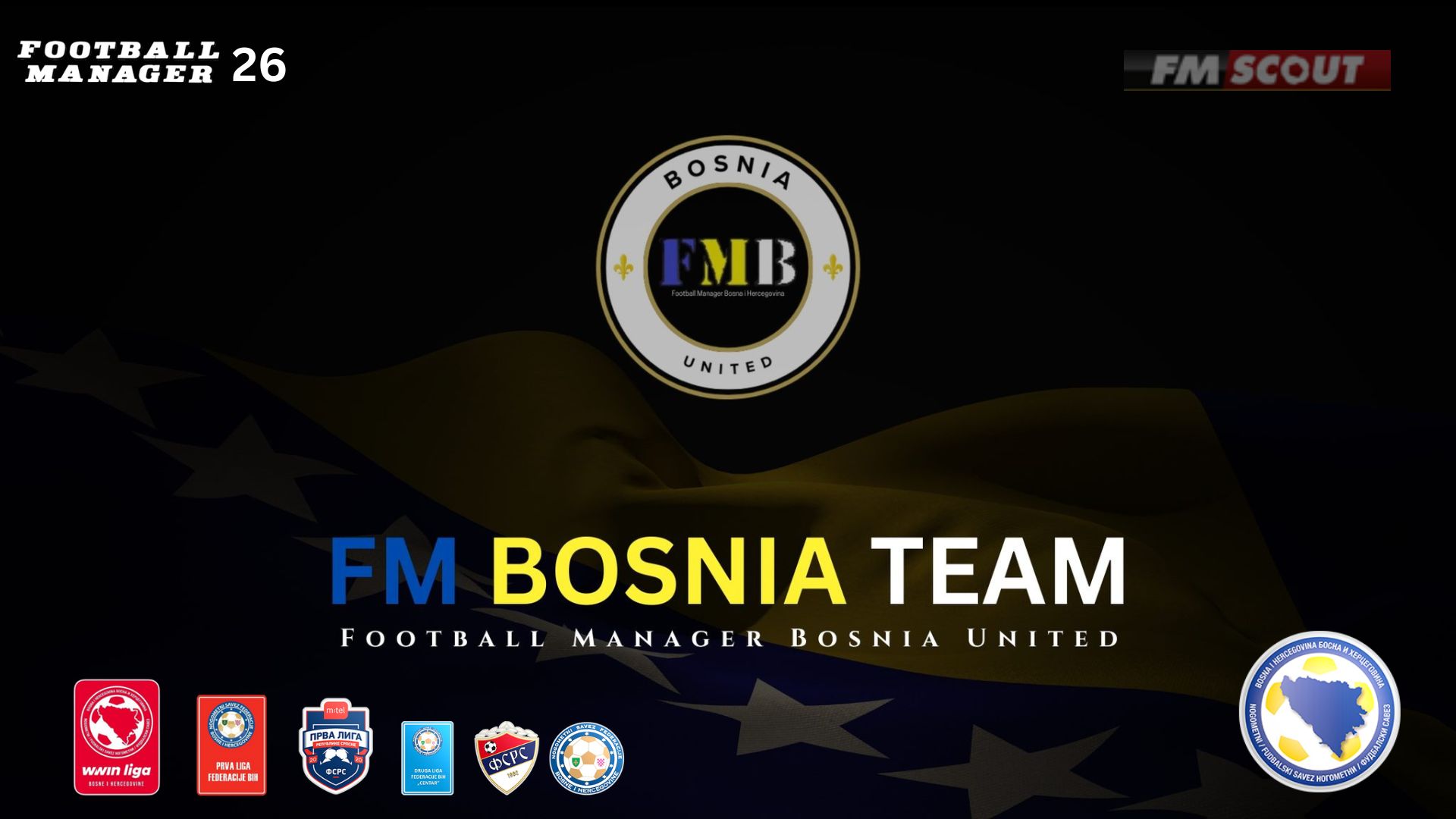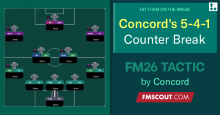
Welcome to my new tactic emulation.
This time I will introduce to you my attempt to emulate Francesco Guidolin's 4-4-1-1 at Vicenza, when he came close to reach Cup Winners Cup's final. Football in the late 90's was not a positional play and collective play like we see now, but Guidolin understood before others that football had to follow this path.
Guidolin, himself from the Sacchi school of thought but less dogmatic in interpreting the principles of the game (by the way, that season he will make an impromptu switch to 4-3-3 and 5-4-1), initially tries to exploit the player's awkward elegance, whom he had already had at Ravenna, always as a left winger.
His role was not so much to converge and receive the ball between the lines but rather to receive wide to draw the opposing team towards him. This was the typical situation in which he had to (more out of necessity than for show) unleash his inventiveness and counterintuitive use of the body, which translated into individual plays useful for creating numerical superiority.
A limiting context that did not give him centrality in the development of the offensive phase but rather isolated him and forced him to make forced choices. After a few months, he was moved behind Luiso and preferred over two more traditional forwards like Otero, who had disagreements with the coach, and Di Napoli, who scored 5 goals in the first 5 matches, worthy of the Puskas Trophy.
A move interpreted as defensive, as instead of a center forward, a player who started a few meters back was deployed (by the way, Zauli himself defined himself as "a midfielder with some offensive qualities") and, when not in possession, dropped back to the midfield line, forming a 4-5-1.
In reality, the intent of the Castelfranco Veneto native coach was to improve the quality of an otherwise frenetic offensive phase, by inserting a playmaker capable of connecting the action, creating numerical superiority behind the midfield, and working to provide assists to Luiso, often playing 1-2 touches.
In line with the football of that period, that Vicenza did not have a particularly codified offensive phase: Zauli's centralization was a targeted measure to favor the ball's progression in a team that otherwise did not exhibit specific offensive plays at the macroscopic level.
A formation that bypassed the midfield (unless it was Di Carlo who dropped back and played long balls), preferring passes from the defense and relying on the physicality of Luiso and Zauli himself, or a switch of play to the wings, which were strictly wide when the ball was released, and they occasionally called for overlapping full-backs.
The white and red team, at least in possession, couldn't impose their control on the game, instead following its flow, alternating impulsive bursts with slower phases, almost at the mercy of the opponent. "Unfortunately, it's a constant," Guidolin lamented after the elimination in the Cup Winners' Cup. "We can't hold onto the result. We start well and then fall apart. We can't manage the lead, and I still haven't been able to figure out why."
The pieces capable of raising the intensity level were the wingers, who were essentially asked to provide width and engage in one-on-one duels. If Schenardi represented the prototype of the old-style number 7, with his feet constantly on the touchline, in Ambrosetti, one of the purest talents in that group, you could see the first traces of the role's evolution.
The left winger did indeed prefer the wide areas, but in addition to crossing, his repertoire of solutions also included making runs to the far post without the ball and moving inside the last 25 meters to unleash a shot from medium to long range. Ambrosetti's game, which would reach 7 goals that year, did not, however, include a collective dimension. On the contrary, trusting his abilities, he tended to favor dribbling over dialogue, at least until he reached the byline.
Guidolin maximized the versatility of some of his players: he squeezed out the playmaking vision and technical precision of Viviani, theoretically a central midfielder, in almost every role (he played as an attacking midfielder in the match against Shaktar, as a central defender against Roda, and then played both legs of the semi-final against Chelsea as a left-back); he utilized Mendez's versatility and ambidexterity on both flanks, whether as a full-back or as a wide midfielder; Belotti, originally a central defender, was converted into a right-back; as mentioned earlier, Zauli, after his initial outings as a winger, was moved behind the striker, while Beghetto operated in various roles along the left flank.
It's worth emphasizing the self-sufficiency and intelligence of Viviani, capable of delivering consistently excellent performances regardless of his position. Against English opponents, he was pushed back to the defensive line to ensure Vicenza had a safer ball-playing outlet, to have a player who was more physically and tactically prepared than the still inexperienced Coco, and to avoid having to choose between Viviani and Ambrosini, who at the time was more daring with the ball.
The dynamism of the future Milan midfielder, despite his excessive enthusiasm and tendency to make tackles, proved to be a decisive factor in a defensive phase that required the two central midfielders to cover a lot of ground. In the defensive phase without the ball, Guidolin followed Sacchi's approach of pressing the opponent's build-up play (although he alternated it with periods of positional defense), but he did not favor a systematic offside trap. Instead, he preferred a deeper defensive line based on zonal marking, with the center-backs occasionally making aggressive forward or wide movements.
The high wide midfielder is the "trigger" for the pressing, orienting himself toward the opposing full-back as soon as the full-back receives the ball, signaling the team to move up. If Ambrosetti attacks the opponent in possession, the full-back behind him narrows his position against the high wide midfielder, and the same goes for the winger on the weak side, who stays wide to track his counterpart.
In this system, the central midfielder can be tasked in all directions: on a long pass, he drops deeper to shield the defense (Di Carlo was a master at intercepting such passes). If the full-back hypothetically plays the ball to the central midfielder, the central midfielder closes down his man. If, on the other hand, the wide midfielder is beaten, the central midfielder must shift to provide cover for a potential 1v2 situation on the flank.
This last scenario also occurs when the wingers fail to return to their positions after an offensive play, which is why Vicenza is almost naturally forced to concede width. Moreover, in numerical inferiority situations, the full-back doesn't step out but instead prefers to position himself toward the center of the penalty area.
Tactical emulation in Football Manager 2023
It was very difficult to emulate this tactic, a 4-4-1-1 mainly because of Lamberto Zauli's position. Emanuele Atturo, in an interview conducted with Zauli himself, described him as "a strange beast, in a football world accustomed to dividing the phenotype of the playmaker between the fast and short and the tall and elegant."The peculiarity of a player capable of combining raw physicality with pure quality was also reflected in the difficulty of assigning him a role in the final 30-40 meters, as was the case with most creative players blossoming in the 90s, confined within the rigidity of Sacchi's 4-4-2 formation.
At Ravenna, he was used as a left midfielder in the 4-4-2 (perhaps why, at the time, there was talk of him as a possible replacement for Jimmy Maini, despite the latter starting from a more central and withdrawn position).
I chose to create two tactics to have 2 different options to emulate Zauli's position (and also one of the 2 midfielders and the forward).
I tested both tactics during the season and I believe the first one, with Zauli (in the game the young Vicenza's cantera kid Leonardo Zarpellon plays in this position) as a shadow striker works better than the second one with Zauli as an advanced playmaker on attack.
The center forward (Pasquale Luiso in Vicenza during the season 1997-1998) works well both as complete forward-support as in tactic 1 and as deep lying forward-support as in tactic 2.
Pellegrini, a young Sassuolo's wonderkid on loan to Vicenza, played a great season. Finally, the last variation between the two tactics is the right central midfielder in the first tactic he is an Half-back on defense and in the second tactic a Deep lying playmaker in defend, to better emulate Domenico Di Carlo's role in that Vicenza he was the core of the play.
But I believe that in Football Manager Half-back and Volante are a great combo.
Let's examine now the other roles: the two full-backs are one a simple full-back on defend Gustavo Mendez was a more defensive player compared to Fabio Viviani or Francesco Coco on the other side. Also in the previous season, Beghetto was more offensive than Mendez. So I chose a Wing-Back for my left-back position. The two central defenders are two simple CD on defense.
Now, another position who was difficult to emulate was Gabriele Ambrosetti, a great winger who played free from any tactical instructions, sometimes he cut inside, sometimes he stayed wider and dribbled a lot. I chose the inverted winger-role for him, in the video you can see also how he loved to dribble and ignored other teammates, he was compared to Ryan Giggs after that season and he went to the Premier League but he came back just after 1 year.
This also means that Guidolin maximized his versatilty and skills and that makes us understand the value of this great coach. Also other players of that Vicenza did not have a great career after leaving the club.
As for the right wing, Marco "Ciccio" Schenardi was a typical winger, just a bit more defensive than Ambrosetti, the two wingers were the triggers of Guidolin's play. So I chose to set Schenardi as a winger-support. Finally, the forward, Pasquale Luiso, he can be emulated both as a complete forward on support and a deep lying forward on support.
Why on support? Because I want him to drop down and link the play, as you can see in the video my forward, Pellegrini often drops down and links the play too.
As for mentality and team instrucitons, the mentality is balanced, team instructions
in possession are: attacking width: fairly wide, I let the players decide according also to their personal instructions , overlap left and right to exploit the flanks, pass into space because Guidolin wanted his players to exploit the open spaces, hit early crosses (this was the two wingers' task), whipped crosses, be more disciplined (Guidolin did not give much freedom to his players.)
In transition: counter-press, counter (when Vicenza gained the ball back they started a fast counter-attack, they actually did not like to play from the back or patiently), distribute quickly, pass to the CD, roll it out.
Out of possession: a mid block and a standard defensive line because Vicenza pressed the opponents but not too hight, to avoid leaving too much space behind the 4 defensive line and when they were defending they build a 4-5-1.
Here are some screenshots.






This is all for my tactic, I won the Serie C, scored 91 goals and conceding only 16 and I played an amusing and beautiful football.
A hug from your Arrigo Sacchi








![FM26 Data Tweaks [v1.1 | v1.9]](assets/downloads/fm26/fm26-data-tweaks-by-sirtavares-v2.th.png)

Discussion: Francesco GUIDOLIN's 4-4-1-1 Vicenza 1996-98
No comments have been posted yet..